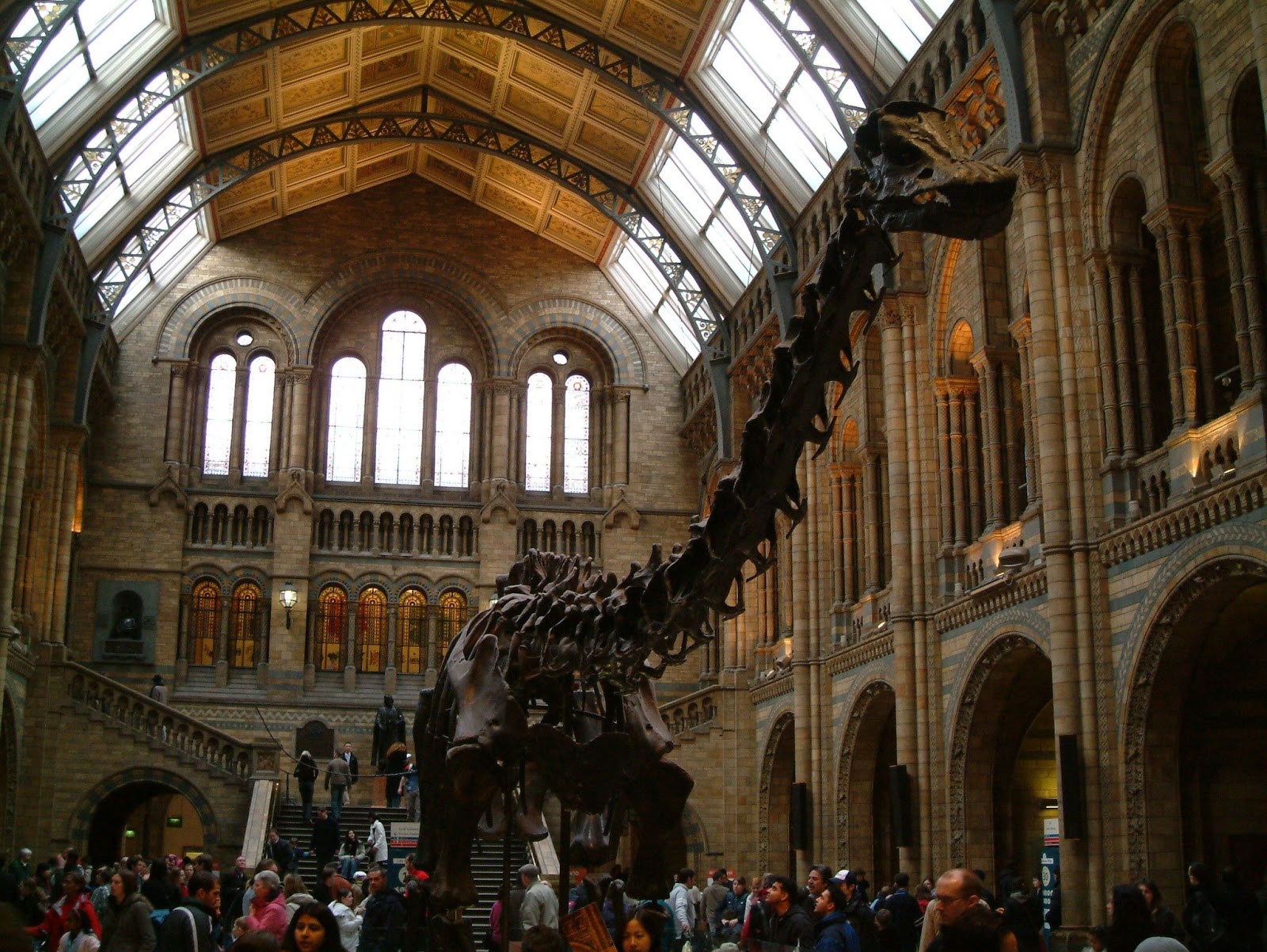It was February 2005 and my stay at UK was coming to an end. We thought of visiting London and this trip was the last trip we made to London while we were staying at UK. I present many faces of central London in this post as seen during this trip. Having used the open top bus quite a few times our preferred mode of travel was London tube this time which was pretty fast and allowed us to selectively cover the attractions quickly.
 |
| Limousine and Open Top Bus |
 |
| St. Paul's Cathedral |
St. Paul's cathedral is one of the most famous and most recognizable sights of London, with its dome, framed by the spires of Wren's City churches, dominating the skyline for 300 years. At 365 feet (111 m) high, it was the tallest building in London from 1710 to 1962, and its dome is also among the highest in the world. St Paul's Cathedral is a busy working church, with hourly prayer and daily services.
 |
| British Museum |
 |
| Natural History Museum |
The Natural History Museum is home to life and earth science specimens comprising some 70 million items within five main collections: Botany, Entomology, Mineralogy, Palaeontology and Zoology. The museum is a world-renowned centre of research, specialising in taxonomy, identification and conservation. Given the age of the institution, many of the collections have great historical as well as scientific value, such as specimens collected by Darwin.
 |
| A Dinosaur Exhibit in Natural History Museum |
 |
| Big Ben |
 |
| London Eye |
The London Eye is a giant Ferris wheel situated on the banks of the River Thames in London, England. The entire structure is 135 metres (443 ft) tall and the wheel has a diameter of 120 metres (394 ft).
It is the tallest Ferris wheel in Europe, and the most popular paid tourist attraction in the United Kingdom, visited by over 3.5 million people annually.
The wheel's 32 sealed and air-conditioned ovoidal passenger capsules, designed and supplied by Poma, are attached to the external circumference of the wheel and rotated by electric motors. Each of the 10-tonne (11-short-ton) capsules represents one of the London Boroughs, and holds up to 25 people, who are free to walk around inside the capsule, though seating is provided. The wheel rotates at 26 cm (10 in) per second (about 0.9 km/h or 0.6 mph) so that one revolution takes about 30 minutes. It does not usually stop to take on passengers; the rotation rate is slow enough to allow passengers to walk on and off the moving capsules at ground level.
London Eye remains the best spot to get a birds eye view of London. You get contrasting images at different times of the day. My favorite time to board London Eye has been the dusk when it's still not dark and by the time you get to the top the street lights are on.
 |
| Piccadilly Circus |
And finally we head toward the Piccadilly Circus. Piccadilly Circus is a road junction and public space of London's West End in the City of Westminster, built in 1819 to connect Regent Street with the major shopping street of Piccadilly. Piccadilly now links directly to the theaters on Shaftesbury Avenue, as well as the Haymarket, Coventry Street, and Glasshouse Street.
 |
| A London School Trip |
The Circus is close to major shopping and entertainment areas in the West End. Its status as a major traffic intersection has made Piccadilly Circus a busy meeting place and a tourist attraction in its own right. The Circus is particularly known for its video display and neon signs mounted on the corner building on the northern side, as well as the Shaftesbury memorial fountain and statue of the Greek god Anteros.
 |
| Red Buses |
And the images on the right are the famous London red buses. It remains one of London's principal icons, the archetypal red rear-entrance Routemaster being recognised worldwide. Although the Routemaster has now been largely phased out of service, with only two heritage routes still using the vehicles, the majority of buses in London are still red and therefore the red double-decker bus remains a widely recognized symbol of the city.
 |
| Show Window of a Store |
And finally determined not to miss the shopping scene it was time to take a tour of Oxford street, the top shopping destination of London. Oxford street has over over 300 shops and is one of the worlds busiest shopping streets. It runs for approximately a mile and a half (two and a half kilometres).
By this time we were tired like dead tree and it was time to take the train back to Coventry. Although it was my last trip to London while I stayed at UK but I was not aware that many more interesting trips to London will follow exploring different themes. Keep coming back for many more exciting accounts of many faces of London and UK.










0 comments:
Post a Comment